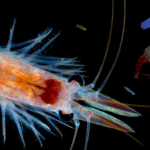Reanalysis representation of low-level winds in the Antarctic near-coastal region
2 December, 2022 by John King, John Turner, Thomas Caton Harrison, Thomas Bracegirdle
Low-level easterly winds encircling Antarctica help drive coastal currents which modify transport of circumpolar deep water to ice shelves, and the formation and distribution of sea ice. Reanalysis datasets are…Read more on Reanalysis representation of low-level winds in the Antarctic near-coastal region
